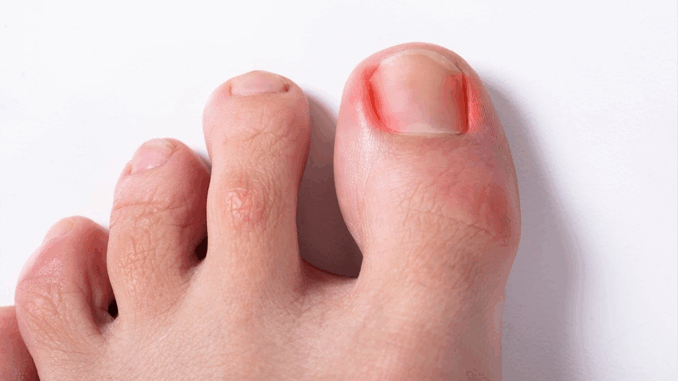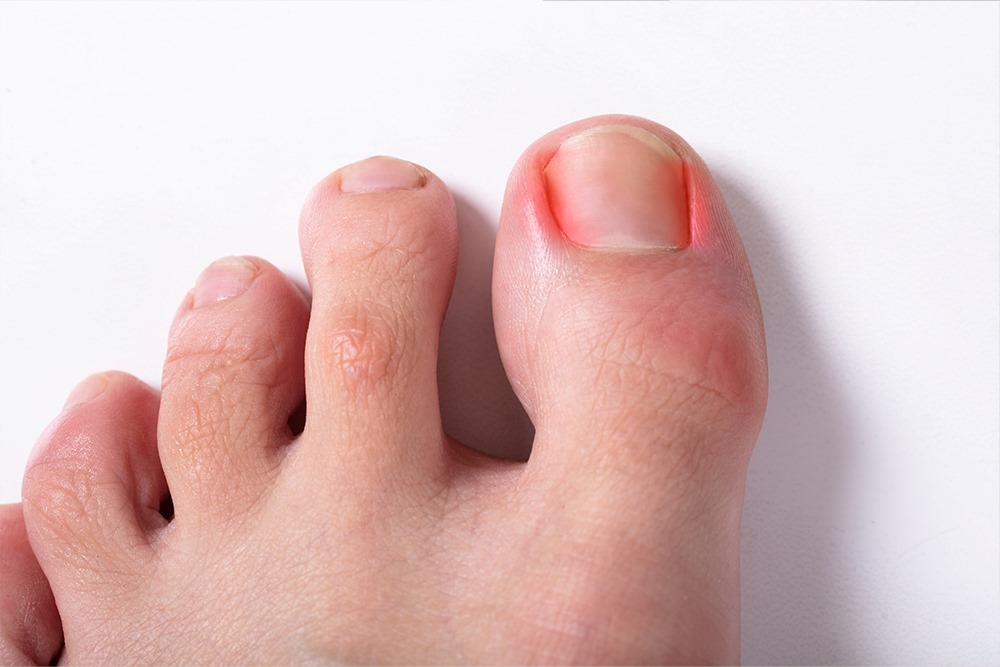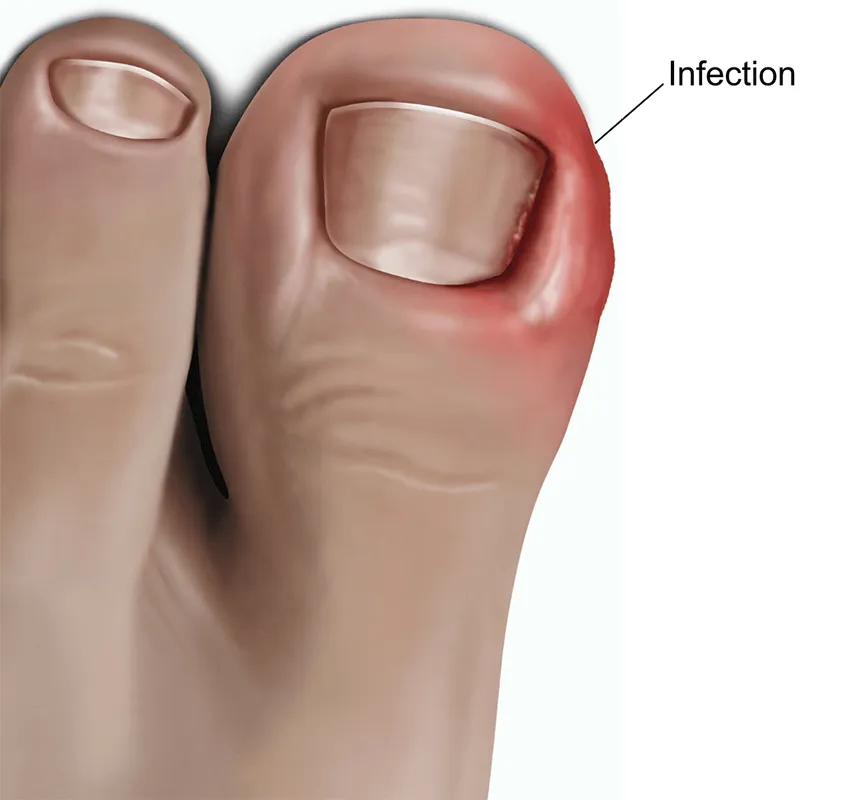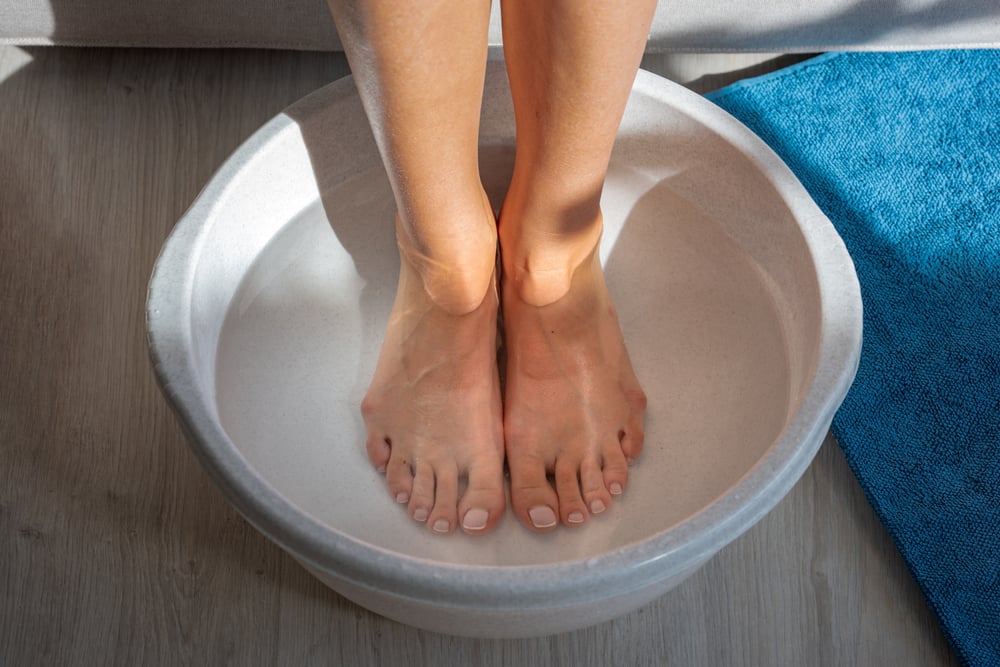

Disclaimer: This article is for informational purposes only and does not provide medical advice. Ingrown toenail treatments described here are general home remedies for mild cases. Always consult a qualified healthcare professional if symptoms are severe, persistent, or if you have underlying health conditions such as diabetes or circulation problems.
An ingrown toenail is a common foot problem that occurs when the edge of the toenail grows into the surrounding skin. This condition often affects the big toe and can cause pain, swelling, redness, and tenderness. In more severe cases, it may even lead to infection. While medical treatment is sometimes necessary, especially for recurring or complicated cases, mild ingrown toenails can often be managed at home with simple, safe remedies.

Common Causes of Ingrown Toenails
Several factors can increase the likelihood of developing an ingrown toenail:
- Wearing tight or narrow shoes that put excessive pressure on the toes.
- Improper nail trimming, such as cutting toenails too short or rounding the edges.
- Toe injuries, including stubbing or repeated pressure during sports.
- Naturally curved toenails, which are more prone to growing inward.
- Poor foot hygiene, which can increase irritation and risk of infection.
- Understanding these causes can help with both treatment and prevention.

Signs and Symptoms of an Ingrown Toenail
Early detection is important for effective care. The following symptoms may indicate an ingrown toenail:
- Pain or tenderness along one or both sides of the toenail.
- Redness and swelling around the affected area.
- Warmth or discomfort when pressure is applied.
- Pus, drainage, or spreading redness, which may suggest infection.
If symptoms worsen or do not improve with home care, professional medical evaluation is recommended.

Home Treatments for Ingrown Toenails
1. Soak Your Foot in Warm Salt Water
Soaking your foot in warm water with Epsom salt helps soften the nail and surrounding skin while reducing swelling.
How to do it:
- Fill a basin with warm water and add 1–2 tablespoons of Epsom salt.
- Soak your foot for 15–20 minutes, two to three times daily.
- Dry your foot thoroughly afterward to avoid excess moisture.

2. Gently Lift the Nail
After soaking, you may attempt to carefully lift the edge of the ingrown nail.
Tip:
- Place a small piece of clean cotton or dental floss under the nail edge to encourage it to grow above the skin.
- Replace the cotton or floss daily to maintain hygiene.
- This method should only be used if the pain is mild and there are no signs of severe infection.

3. Apply an Antibacterial Ointment
Using an over-the-counter antibiotic cream helps prevent infection and supports healing.
How to do it:
- Apply a thin layer of ointment after each soak.
- Cover the area with a clean bandage to protect against dirt and bacteria.

4. Choose Comfortable Footwear
- Shoes that are too tight can worsen pressure on the toe.
- Opt for shoes with a wide toe box.
- If possible, wear open-toed sandals until the toenail heals.
- This reduces irritation and allows the nail to recover more quickly.

5. Natural Remedies for Relief
- While home treatments focus on hygiene and nail care, some natural remedies may help relieve discomfort and reduce irritation:
- Tea Tree Oil: Known for its antibacterial and antifungal properties. Dilute with a carrier oil (such as coconut or olive oil) and apply to the affected area.
- Apple Cider Vinegar: Create a foot soak by mixing apple cider vinegar with warm water. This may help reduce bacteria and inflammation.
- Aloe Vera Gel: Apply directly to soothe redness and swelling. Its cooling effect can provide temporary relief.
Note: Natural remedies should be used alongside, not as a replacement for, proper hygiene and basic medical care.
Prevention Tips for Ingrown Toenails
- Preventing ingrown toenails is often easier than treating them. Consider the following tips:
- Trim toenails straight across rather than rounding the edges.
- Avoid cutting nails too short.
- Keep feet clean and dry to reduce the risk of infection.
- Wear properly fitted shoes that provide enough room for your toes.
- Protect your toes during sports or activities that involve repetitive impact.
When to See a Doctor
While home remedies can be effective for mild cases, some situations require medical attention:
- Severe or worsening pain despite home treatment.
- Signs of infection such as pus, spreading redness, or significant swelling.
- Repeated ingrown toenails that do not improve with prevention strategies.
- Individuals with diabetes, nerve damage, or poor circulation should seek professional care immediately if an ingrown toenail develops, as complications can be more serious.
In some cases, doctors may recommend minor procedures, such as partial nail removal or treatment to prevent the nail from growing inward again.

Conclusion
An ingrown toenail can be painful, but with the right care, many mild cases can be treated at home. Simple steps such as foot soaks, gentle nail lifting, antibacterial ointments, and natural remedies often provide relief. However, it is essential to pay attention to warning signs and seek medical help when necessary, especially for recurring or infected toenails.
By practicing good foot hygiene, wearing proper footwear, and trimming nails correctly, you can reduce the chances of future ingrown toenails and maintain better overall foot health.
Để lại một phản hồi